Scripsit
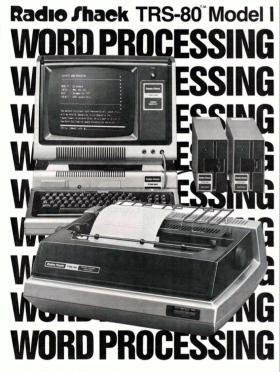
Front cover of Radio Shack brochure announcing Scripsit
Scripsit was described by 80 Micro magazine as “the overwhelming choice of TRS-80 owners.” Since the TRS-80 was the top selling computer in the early days of microcomputers, Scripsit was a very popular word processor. As late as 1984 (according to the market research firm InfoCorp), Scripsit was still the third most popular word processor across all computers1, not just the TRS-80.
Both Model I/III Scripsit and Model II Scripsit won the 80 Micro Reader’s Choice Awards in 1982 and 1983. (Color Scripsit came in second both years.) Model I/III Scripsit was one of only five programs inducted into the 80 Micro Hall of Fame in 1983.
Scripsit for the Model I/III and 4
The first Scripsit2 was introduced in 1979 for the TRS-80 Model I (and later Model III). Scripsit (not Scriptsit3, as it is sometimes incorrectly written) came in two versions:
- Cassette Scripsit (catalog number 26-1505) cost $69.95.
- Disk Scripsit (catalog number 26-1563) cost $99.95.
Scripsit was aimed at people with no previous word processing experience. It came with a training course with six lessons on three audio cassettes. As Radio Shack said in their brochure announcing Scripsit:
Once you’ve typed your first draft, the real advantages begin. You easily can correct errors, insert and delete words, sentences or even paragraphs quickly on your video screen. You can move, exchange, rearrange, or copy specified “blocks” of text. You can print any number of error-free “originals” at 500 words per minute!
The primary competition for Scripsit was the word processor Electric Pencil. Scripsit was faster and never dropped characters (a problem with Electric Pencil), but lacked some formatting features.
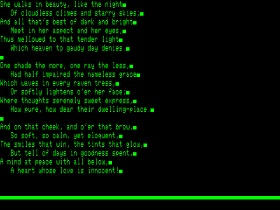
Model 4 Scripsit in operation
The biggest limitation of Model I/III Scripsit was that it provided no way to select underline, italic, bold, or any other type of character formatting. Many people wrote patches to Scripsit to correct this deficiency. Some of those patches were expanded into add-on programs, such as Scriplus, Scriptr, Superscript, Scripmod, and Qwerty. They all used different approaches to add the missing formatting features to Scripsit.
Radio Shack sold a spelling checker for Model I/III Scripsit (catalog number 26-1591) and Model 4 Scripsit (catalog number 26-1600) for $99.95.
The Model 4 version of Scripsit (catalog number 26-1596) was released in 1984 for $99.95. The changes made from the earlier Model I/III Scripsit were minimal, mostly the ability to use the larger screen size (80 by 24) of a Model 4. Model 4 Scripsit lacked the features of some other word processors, but a review in 80 Micro described it as a “proven, bug-free program."4
Scripsit for the Model II
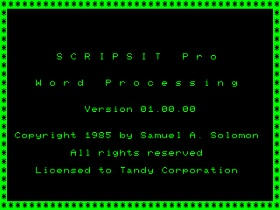
Scripsit Pro opening screen
Radio Shack described Model II Scripsit as “one of the finest word processing systems available at any price.” It was more powerful than Model I/III Scripsit, supporting the underline, italic, and boldface attributes that the earlier version lacked. It could edit documents larger than memory and supported multiple column text. Model II Scripsit was known for making especially good use of Radio Shack’s Daisy Wheel Printer II.
Model II Scripsit was widely used within Radio Shack. In 1981, Jon Shirley (Vice President of Computer Merchandising at the time) noted in his “View From the 7th Floor” column in the TRS-80 Microcomputer News that Radio Shack was using Model II Scripsit to write all manuals and advertising copy. He also used it to write his “View From the 7th Floor” column.
Radio Shack sold a number of add-ons for Model II Scripsit including a “Spelling and Hyphenation Dictionary” in floppy disk (catalog number 26-4534) and hard disk (catalog number 26-4834) versions for $199.00.
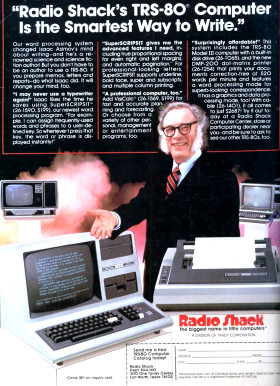
Isaac Asimov advertising Model III SuperScripsit
Scripsit for the Color Computer
The Color Computer version of Scripsit, known as Color SCRIPSIT (catalog number 26-3105), was released in 1981 for $39.95. It was written by Robert Kilgus. Color Scripsit was a Program Pak (ROM cartridge) but could save documents to cassette tape. The disk version of Color Scripsit (catalog number 26-3255) was released in 1982 for $59.95. Disk Color Scripsit added many features, including the ability to display lowercase letters, underline text, embed printer control codes, and print on non-Radio Shack printers.
Color Scripsit II (catalog number 26-3109), released in 1987 for $29.95, wasn’t a revision of the earlier Color Scripsit but a completely new program. It was written by Dale Lear and was based on his earlier T/S Edit. Color Scripsit II used a graphical screen to display text, although still at 32 columns. On a Color Computer 3, Color Scripsit II could display lowercase text at 38 columns.
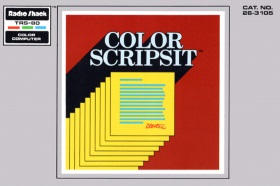
Front of Color Scripsit package
SuperScripsit
SuperScripsit was a word processor for the Model I/III and later Model 4 that had more in common with Model II Scripsit. That wasn’t surprising, because it was also written by Samuel Solomon, the author of Model II Scripsit. There were two versions of SuperScripsit:
- Model I/III SuperScripsit (catalog number 26-1590) was released in 1982 and cost $199.00.
- Model 4 SuperScripsit (catalog number 26-1595) was released in 1983 and cost $199.00.
Scripsit for the Model 100
The portable Model 100 came with TEXT, a very capable text editor, so the Model 100 version of Scripsit focused entirely on the text formatting features. Scripsit 100 (catalog number 26-3830) cost $39.95 and came in a tape version only (not an Option ROM). According to the Radio Shack catalog, Scripsit 100 “included advanced formatting capabilities and print features.”
Scripsit Pro
Described in the catalog as “our most powerful word processing program,” Scripsit Pro (catalog number 26-1601) was one of the last word processors created for the Model 4. Like Model II Scripsit and SuperScripsit, it was written by Samuel Solomon. Scripsit Pro was released in 1986 and cost $249.95.
Scripsit for XENIX
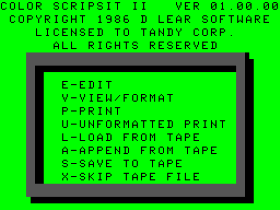
Color Scripsit II opening screen
Scripsit 16 was largely written by Kevin Michael Vail, who had previously worked with Samuel Solomon on Model II Scripsit. It ran under XENIX, which was Microsoft’s licensed version of UNIX that ran on Motorola 68000-based computers like the Model 16. XENIX was a multi-user operating system and Scripsit 16 was the most powerful version of Scripsit to date.
The XENIX operating system also ran on the Intel 80286. In 1986, Radio Shack released Scripsit 286 (catalog number 25-4213) for $499.00. Scripsit 286 had similar features to Scripsit 16, but would run on the 80286-based Tandy 3000.
Scripsit Speller (catalog number 26-6434) was a $249.00 spelling checker that worked with Scripsit 16.
Scripsit for MS-DOS
Radio Shack released several MS-DOS versions of Scripsit that probably derived from the XENIX-based Scripsit 16. There were several programs:
- Scripsit PC (catalog number 25-3171) was for the Model 1200, 3000, and IBM PC compatibles. It cost $299.95.
- Scripsit 1000 (catalog number 25-1155) was for the Model 1000 and 2000. It was released in late 1985 for $299.95.
- Scripsit 2000 (catalog number 26-5332) was for the Model 2000. It was supposed to be released in 1985 for a price of $299.95. Since Scripsit 1000 would also work on the Model 2000 (and Scripsit 2000 wasn’t included in subsequent catalogs), it isn’t clear if it was ever released.
In late 1987, Radio Shack released their final Scripsit program. It was the oddly named Varsity Scripsit (catalog number 25-1174) which cost $99.95. Like Scripsit 16, Varsity Scripsit was largely the work of Kevin Michael Vail. In an unusual move for Radio Shack, Varsity Scripsit was also sold and supported by Ingram Software.
Nexus Scripsit
There was one more implementation of Scripsit, but it wasn’t created by Radio Shack. Nexus, a company created by John Esak, licensed the XENIX Scripsit source code from Radio Shack. Nexus continued developing Scripsit for several years (even hiring Kevin Michael Vail) and created versions for a number of Unix-based computers.
-
Scripsit had 13% of the worldwide market. Number one (not surprisingly) was WordStar with 24% of the market. Number two was Apple Writer with 22%. ↩︎
-
Radio Shack never identified the outside developer who wrote Model I/III Scripsit. A 1984 letter by Samuel Solomon published in Infoworld seemed to suggest that he also wrote Model I/III Scripsit, but the wording in his letter isn’t completely clear. ↩︎
-
The name was always Scripsit (usually capitalized as SCRIPSIT), never Scriptsit. Scripsit was a registered trademark and (despite what some sources state) Radio Shack never “sometimes inconsistently used Scriptsit” instead. ↩︎
-
Although some have claimed that Model 4 Scripsit was riddled with bugs, this is easily disproved by actually using the program. ↩︎
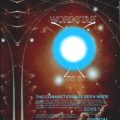
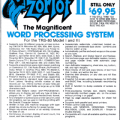
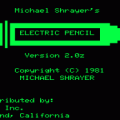
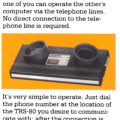










JD says:
According to Frank Durda (in several posts on the comp.sys.tandy newsgroup), the author of the original Scripsit was Kevin Dack, an internal programmer for Tandy.
A. Trent Phillips says:
Would be nice to find some UNIX version that I could get running on a modern Linux or BSD box to try it out. Maybe even an old 286 version to try on VM or DOSBox.